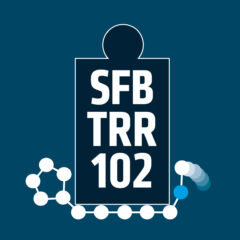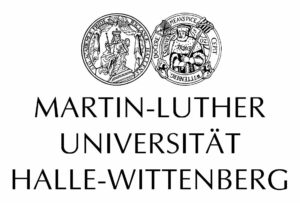Paul
Ordering transitions in polymers, be it crystallization of synthetic polymers or amyloid formation of proteins, are the outcome of an intricate interplay between chain stiffness, unspecific attraction between repeat units (van der Waals and Coulomb) and specific interactions (hydrogen-bonding, π-stacking, …).
We studied the competition between stiffness and unspecific attraction on intramolecular ordering and polymer crystallization from the melt. For peptides, we studied an intermediate resolution model to obtain a semi-quantitative description of poly-glutamine chains, which we could compare to experiments and chemically realistic simulations. All these results were obtained using Wang-Landau and Stochastic Approximation Monte Carlo simulations, which we also developed further . Our work concerning single chain structures of alkane chains and their relation to structure formation in proteins continued in looking at alkanes (up to about 200 repeat units) attached to graphite and gold (or other relevant) surfaces. We wanted to address the influence of confining surfaces (allowing for epitactic growth or not) and different attraction strengths to the alkane repeat units on the ordering transition of these chains. This would yield insight into the interpretation of the experiments looking at crystallization of alkanes at surfaces. We would also continue to look into the kinetic behavior of the crystallization of simple synthetic polymers like polyethylene (PE), poly- ε- caprolactone (PCL) or polyethyleneoxide (PEO) using Molecular Dynamics simulations. We wanted to use crystal seeding to study the attachment of chains to the crystal growth front and address questions on the influence of crystal mobility on the growth mechanism of the crystals, making contact to experiments performed within the SFB. On the peptide side, we studied the single chain structures of poly-alanine, poly-serine and poly-glutamine. For poly-glutamine, we showed that the intermediate resolution PRIME20 model, which we were using for our Monte Carlo approach, provided results which were well comparable with experiments. This encouraged us to focus in the next period on the early stages of amyloid formation by studying the aggregation behavior of poly-glutamine, of Aβ1-40 and of an amyloid forming segment of the parathyroid hormone of the same length (PTH1-40). The latter two aggregation processes had been investigated experimentally within the SFB, and while both proteins formed identical cross-β amyloid fibrils, their thermodynamic stability was very different. While Aβ1-40 fibrils aggregated irreversibly and served as a molecular waste dump, aggregation of their PTH counterparts was reversible and the fibrils were employed as storage space for this hormone. Our Stochastic Approximation Monte Carlo approach using the PRIME20 model was ideally suited to study the origin of the different thermodynamics of these fibrils. We began with a study of the dimerization of these molecules and then tried to extend the aggregate size as much as feasible within our computational approach to obtain an indication of the critical nucleus size for the growth of amyloid fibrils of these proteins as well.
Highlighted Publications:
- Arne Böker and Wolfgang Paul, Thermodynamics and Conformations of Single Polyalanine, Polyserine, and Polyglutamine Chains within the PRIME20 Model.
- T. Shakirov and W. Paul, Folded alkane chains and the emergence of the lamellar crystal J. Chem. Phys. 150, 084903-8 (2019)
- T. Shakirov and W. Paul, Crystallization in melts of short, semiflexible hard polymer chains: An interplay of entropies and dimensions Phys. Rev. E 97, 042501 (2018)


